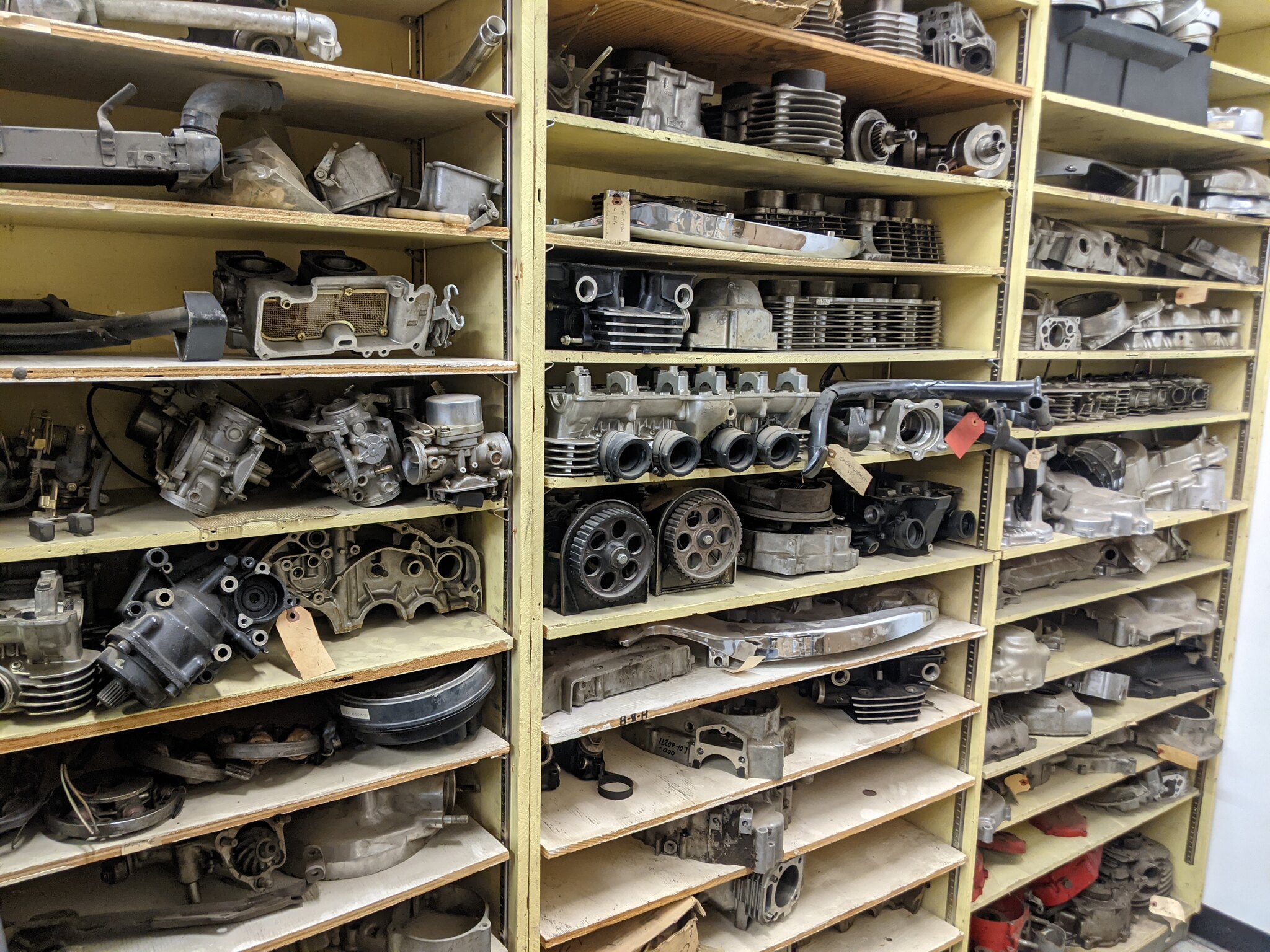Your Go-To Motorbike Shop for Quality Parts and Accessories
Your Go-To Motorbike Shop for Quality Parts and Accessories
Blog Article
Understanding the Important Parts of a Bike: A Comprehensive Guide for Lovers
For bike enthusiasts looking to raise their riding experience and guarantee their bikes run smoothly, recognizing the necessary elements of a motorcycle is critical. Each component, from the engine's elaborate workings to the essential role of the stopping systems, not just affects performance however additionally security and convenience.
Engine Parts

The camshaft plays a critical function in regulating the timing of the engine's valves, making sure the specific opening and closing necessary for efficient fuel and air intake, in addition to exhaust expulsion. This timing is critical to maintaining optimum engine performance and performance. In addition, the carburetor or gas injection system, depending on the motorbike version, is accountable for blending air with gas in the right ratio for burning.
The air conditioning system, either air or liquid-based, functions to preserve the engine's temperature level within operational limits, preventing getting too hot and making certain long life - motocross gear. Each part, carefully designed and incorporated, adds to the seamless operation of the engine, specifying the bike's power output and general efficiency
Transmission System
Essential to the bike's functionality, the transmission system makes sure reliable power transfer from the engine to the wheels. This system makes up several critical parts, including the clutch, gearbox, and final drive, each playing a crucial function in translating the engine's power right into movement. The clutch, commonly operated by a hand bar, offers to disengage the engine and involve from the transmission, enabling smooth equipment adjustments and regulated velocity.
The gearbox, commonly described as the transmission correct, has a collection of equipments that bikers can manually shift through to change the bike's rate and torque output. These gears are prepared in a sequence that enables the bike to speed up smoothly and preserve ideal engine efficiency throughout different speeds. A lot of motorbikes utilize a sequential gearbox, requiring the rider to shift gears in an established order.
Braking Systems
While understanding the transmission system is essential to harnessing a motorbike's power, similarly important is the capacity to manage and stop that power successfully, which is where stopping systems come right into play. Brakes are critical for security and performance, offering the motorcyclist with the essential control to browse different surfaces and problems. Normally, bikes feature 2 kinds of braking systems: disc brakes and drum brakes.
Disc brakes are extra widespread in modern-day motorbikes due to their premium performance. This system provides better heat dissipation, consistent performance, and improved quiting power, especially in damp problems.
Conversely, drum brakes, though less usual, are still found in some motorbikes. They function by pressing brake footwear versus the inner surface of a drum attached to the wheel. While typically much less reliable in warmth dissipation and stopping power, drum brakes are simpler and extra cost-effective.
Understanding these braking systems' nuances motorcycle helmet with sun visor allows cyclists to maintain their motorbikes properly and value the design that guarantees effective and secure stopping.
Suspension and Steering
Suspension and steering systems are important components that considerably affect a motorbike's handling and ride comfort. The suspension system, consisting of forks at the front and shock absorbers at the back, absorbs road abnormalities, improving stability and control. Front forks, commonly telescopic or inverted, compress and rebound to minimize impacts, while rear shock absorbers keep tire call with the road, essential for traction and security.
Guiding, centered around the handlebars, connects the cyclist to the bike's directional control. The guiding head bearings make sure smooth operation, permitting specific ability to move. Appropriate positioning and maintenance of these bearings are vital for foreseeable steering reaction and minimizing biker fatigue.
The suspension's adjustability is another critical element; preload, damping, and rebound settings allow personalization to suit numerous riding conditions and designs. This flexibility is essential for maximizing performance, whether browsing city streets or tackling rugged tracks. Developments like electronic shock absorber supply real-time modifications, enhancing ride quality throughout varied surfaces.

Electric Solutions
After making certain a smooth and regulated experience with efficient suspension and steering systems, interest turns to the electrical systems, a pivotal element of contemporary bikes. These systems play an essential function not only in starting the engine yet also in powering numerous components that boost the functionality and security of the bike.
At the heart of a bike's electric system is the battery, which stores electric energy essential for beginning the engine and powering auxiliary systems - mx gear nz. The alternator or generator, combined with the rectifier-regulator, guarantees the battery remains charged while the motorcycle functions, reference transforming power right into electric energy and keeping voltage degrees
The ignition system, one more essential part, is accountable for igniting the air-fuel blend in the engine's cyndrical tubes. Modern motorcycles commonly utilize an electronic ignition system, offering greater efficiency and integrity contrasted to conventional systems.
Lights systems, consisting of headlights, tail lights, and indications, are also vital, guaranteeing visibility and safety for the biker. useful site Added electronic components such as sensing units, control units, and shows add to sophisticated functions like fuel injection monitoring, anti-lock braking systems (ABDOMINAL MUSCLE), and digital control panels, additionally improving the riding experience.
Final Thought
A complete comprehension of a bike's necessary components, including the engine, transmission system, braking devices, suspension, steering, and electrical systems, is essential for enthusiasts aiming to enhance performance, convenience, and safety. Proficiency of these aspects enables educated decisions relating to upkeep and upgrades, ultimately enhancing the riding experience. By integrating this knowledge, motorcyclists can guarantee their motorbikes operate at peak efficiency and integrity, thus optimizing both pleasure and long life of their automobiles.
For motorcycle enthusiasts looking to boost their riding experience and ensure their bikes run efficiently, recognizing the crucial components of a motorcycle is vital.Essential to the bike's capability, the transmission system ensures effective power transfer from the engine to the wheels.While recognizing the transmission system is crucial to utilizing a bike's power, equally essential is the capacity to regulate and stop that power efficiently, which is where braking systems come right into play. Commonly, motorcycles feature two types of braking systems: disc brakes and drum brakes.
A thorough understanding of a motorbike's crucial components, consisting of the engine, transmission system, stopping devices, suspension, guiding, and electric systems, is crucial for enthusiasts aiming to enhance comfort, efficiency, and safety and security.
Report this page